
A laptop, also called a notebook computer or simply a notebook, is a portable computer. It offers most of the same functionality as a desktop computer, but with greater portability. As such, the components of a laptop are designed to be smaller and more energy-efficient than their desktop counterparts. This makes laptops an ideal choice for those who need a computer on the go, such as students, business professionals, and travelers.
Content of the page
Key Components of a Laptop
The components of a laptop are typically split into two categories: hardware and software. The hardware is the physical parts of the laptop, such as the chassis, motherboard, and other components. The software is the programs and applications that run on the laptop, such as the operating system and other applications. The following are some of the key components of a laptop that you should understand.
1. Processor

The processor, or Central Processing Unit (CPU), is the brain of the laptop. This is the component responsible for running all of the programs and applications on the laptop. It is typically referred to as the “processor” in laptop specs, and is measured in gigahertz (GHz). The faster the processor, the better the performance of the laptop.
1.1 Types of Processors
The type of processor in a laptop will determine its performance. The most common types of processors are Intel and AMD. Intel processors are typically found in higher-end laptops, and are known for their performance and energy-efficiency. AMD processors are typically found in lower-end laptops, and are known for their affordability.
1.2 Processor Speed and Cores
Processors are measured by their speed and number of cores. The speed is measured in gigahertz (GHz), and the number of cores refers to the number of processor cores. The more GHz a processor has, the faster it is, and the more cores it has, the more powerful it is. Generally speaking, a faster processor and more cores will result in better performance.
2. Memory (RAM)
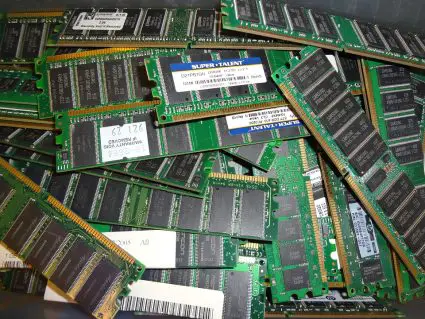
Random Access Memory (RAM) is the memory on a laptop that is used to store data while the laptop is running a program. The more RAM a laptop has, the more programs it can run at the same time without slowing down. RAM is measured in gigabytes (GB).
2.1 Types of RAM
The two most common types of RAM are DDR3 and DDR4. DDR3 RAM is typically found in older laptops and is not as energy-efficient as DDR4 RAM. DDR4 RAM is typically found in newer laptops and is more energy-efficient.
2.2 RAM Capacity and Speed
RAM is measured by its capacity and speed. The capacity is measured in gigabytes (GB), and the speed is measured in megahertz (MHz). The higher the capacity and speed of the RAM, the better the performance of the laptop. Generally speaking, more RAM and faster RAM will result in better performance.
Check this article for in depth guide on RAM memory.
3. Storage (Hard Drive and Solid State Drive)
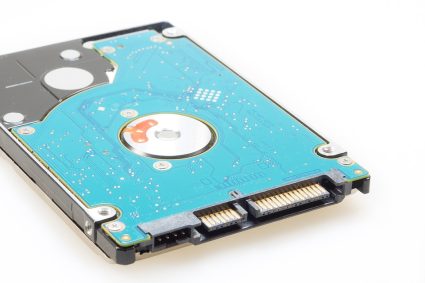
Storage is an important component in laptops since it stores the data. There are two types of storage: hard drives (HDDs) and solid-state drives (SSDs).
3.1 Hard Drive vs Solid State Drive
A hard drive is a traditional storage device that uses spinning disks to store data. Hard drives are generally large in capacity, but slow in speed. On the other hand, a solid-state drive is a newer technology that uses flash memory to store data. SSDs are much faster than HDDs, but they are more expensive and offer less storage capacity.
3.2 Storage Capacity and Speed
When it comes to choosing a laptop, it is important to consider both the storage capacity and the speed. For example, if you need a lot of storage space for large files, an HDD may be the best option. On the other hand, if you need fast read and write speeds, an SSD may be the better choice.
4. Display Screen
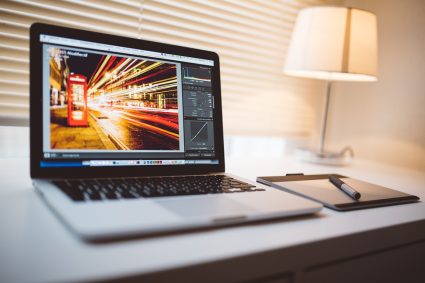
The display screen is another important component of a laptop. It is the main output device, and it can have a significant impact on the user experience.
4.1 Types of Displays
There are several types of displays available for laptops. The most common types are LCD, LED, and OLED. Each type has its own advantages and disadvantages, so it is important to consider your needs before making a decision.
- LCD (Liquid Crystal Display) displays are the most common type of laptop display. They are relatively inexpensive and offer good image quality.
- LED (Light Emitting Diode) displays are more energy-efficient than LCD displays and offer better image quality. They are also thinner and lighter than LCD displays.
- OLED (Organic Light Emitting Diode) displays are the newest type of laptop displays. They offer the best image quality, but they are also the most expensive.
4.2 Resolution and Size
When choosing a laptop, it is also important to consider the resolution and size of the display. The resolution is the number of pixels on the screen, which determines how sharp the images will look. The size is the physical size of the display, measured diagonally. Generally, larger displays offer better image quality, but they can also be heavier and more expensive.
5. Graphics Card
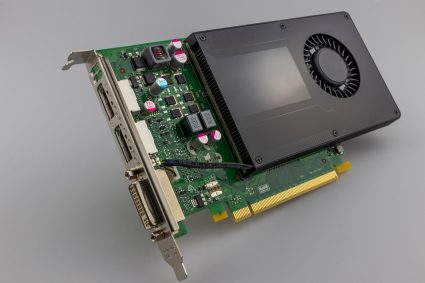
The graphics card is an important component for laptops that are used for gaming or other intensive tasks. It is responsible for processing and rendering graphics.
Check out our article related to graphic card for laptops.
5.1 Integrated vs Dedicated Graphics Card
There are two types of graphics cards: integrated and dedicated. An integrated graphics card is built into the laptop and uses the system RAM to process graphics. This type of graphics card is good for basic tasks, but it is not suitable for gaming or intensive tasks. A dedicated graphics card is a separate component that has its own RAM and is much more powerful. This type of graphics card is suitable for gaming and intensive tasks.
5.2 Graphics Card Capacity and Performance
When choosing a laptop, it is important to consider the graphics card capacity and performance. The capacity is the amount of graphics RAM the card has. The performance is the speed at which the card can process graphics. Generally, higher capacity and higher performance cards are better, but they can also be more expensive.
6. Battery
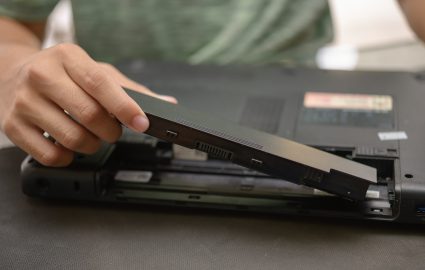
The battery is the main power source of a laptop and is the component that makes the laptop portable. It is important to understand the different types of batteries and their characteristics in order to make an informed decision when purchasing a laptop.
6.1 Types of Batteries
The most common type of laptop battery is the lithium-ion battery, which is lightweight and offers good energy density. These batteries typically last for 500 charge cycles and can last for up to 3 years with proper care. Other types of batteries include lithium-polymer and nickel-metal-hydride, which are both heavier and less energy dense but offer longer life cycles.
6.2 Battery Life and Charging Time
Battery life is one of the most important factors to consider when buying a laptop. A laptop’s battery life is typically measured in hours and can vary significantly depending on the model. Generally, laptops with larger batteries and more efficient components will have longer battery life, while those with faster processors and more powerful graphics cards will have shorter battery life. The charging time of a laptop battery is also important to consider, as some laptops can take several hours to charge.
7. Keyboard and Touchpad
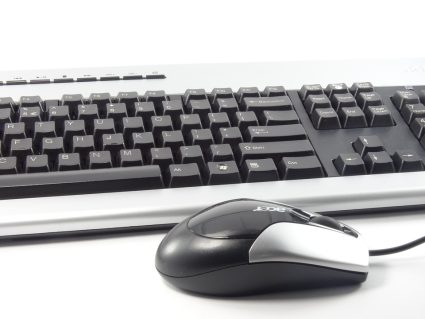
The keyboard and touchpad are the main input devices used to control the laptop and are important to consider when selecting a laptop. The keyboard and touchpad are typically located near the top of the laptop and are used to type, navigate, and select items on the screen.
7.1 Types of Keyboards and Touchpads
Laptop keyboards and touchpads come in a variety of sizes and types. Some keyboards are backlit, while others are not. Some touchpads are clickable, while others are not. Additionally, some touchpads feature gesture recognition or other advanced features.
7.2 Key Travel and Touchpad Responsiveness
The key travel and touchpad responsiveness are two other important factors to consider when selecting a laptop. Key travel is the distance the key must be pressed before it registers a keystroke. The touchpad responsiveness is the speed at which the touchpad responds to input. Both of these factors are important for typing accuracy and comfort.
8. Ports and Connectivity
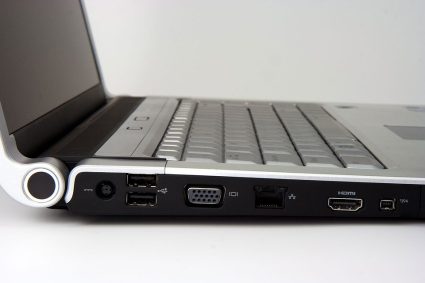
Ports and connectivity are important aspects of a laptop. Most laptops have a variety of ports and connectors, allowing them to connect to external devices and accessories. Additionally, laptops typically have Wi-Fi and Bluetooth connectivity, allowing them to connect to the internet and other devices wirelessly.
8.1 Common Ports and Their Functions
The most common ports and connectors on a laptop are:
- USB: Used to connect peripherals such as external hard drives, mice, and keyboards.
- HDMI: Used to connect to external displays such as televisions and monitors.
- VGA: Used to connect to legacy monitors and projectors.
- Ethernet: Used to connect to wired networks.
- Audio: Used to connect headphones, speakers, and microphones.
8.2 Wi-Fi and Bluetooth Connectivity
Most laptops come with built-in Wi-Fi and Bluetooth connectivity, allowing them to connect to the internet and other devices wirelessly. Wi-Fi is typically used for internet access, while Bluetooth is used for connecting peripherals such as headphones and mice.
Conclusion
When it comes to understanding the components of a laptop, it is important to know the basics of the different types of hardware found in a laptop. Knowing what each part does and how it works together can help you make an informed decision when purchasing a laptop. While there are many components and parts to consider when buying a laptop, understanding the basics of the hardware can help you make the right decision for your needs.
The most important components to consider are the processor, memory, storage, graphics card, ports, and battery. The processor determines the speed of the laptop and the amount of data it can process, while the memory and storage determine the capacity of the laptop. A dedicated graphics card can help improve the visuals of the laptop, while the ports provide the connection for external devices and the battery determines how long you can use the laptop on a single charge.
Having a basic understanding of the components of a laptop can help you make an informed decision when buying a laptop. Knowing the basics of the different parts of a laptop can help you choose the right laptop for your needs.
FAQs
1. What are the key components of a laptop?
The key components of a laptop are the processor, memory, storage, graphics card, ports, and battery. The processor is the brain of the laptop and determines its speed and the amount of data it can process. The memory and storage determine the capacity of the laptop, while the graphics card can improve visuals. The ports provide the connection for external devices and the battery determines how long the laptop can run on a single charge.
2. What is the difference between a hard drive and a solid state drive?
A hard drive is a physical storage device that uses spinning disks, while a solid state drive (SSD) is a storage device that uses flash memory. Hard drives are typically larger and slower than SSDs, but they are cheaper and more reliable. SSDs are faster, more energy-efficient, and less prone to failure than hard drives, but they are more expensive.
3. What is the importance of graphics card in a laptop?
The graphics card is responsible for rendering images on the laptop’s screen. It is an important component for gaming and graphic-intensive applications, such as video editing and 3D rendering. A dedicated graphics card can improve the visuals of the laptop and provide smoother performance for gaming and other applications.
4. How long does a laptop battery last?
The battery life of a laptop depends on a variety of factors, such as the type of battery, the size of the battery, the type of processor, and the power settings. Generally, a laptop battery can last anywhere from 3 to 8 hours on a single charge, although this can vary depending on usage.
5. Which ports are commonly found in a laptop?
Common ports found in a laptop include USB ports, HDMI port, Ethernet port, audio jack, and a memory card reader. USB ports are used for connecting devices such as a mouse, keyboard, or external hard drive. The HDMI port is used for connecting a monitor or projector. The Ethernet port is used for wired internet connection, while the audio jack is used for connecting speakers or headphones. The memory card reader is used for reading memory cards such as SD cards.
